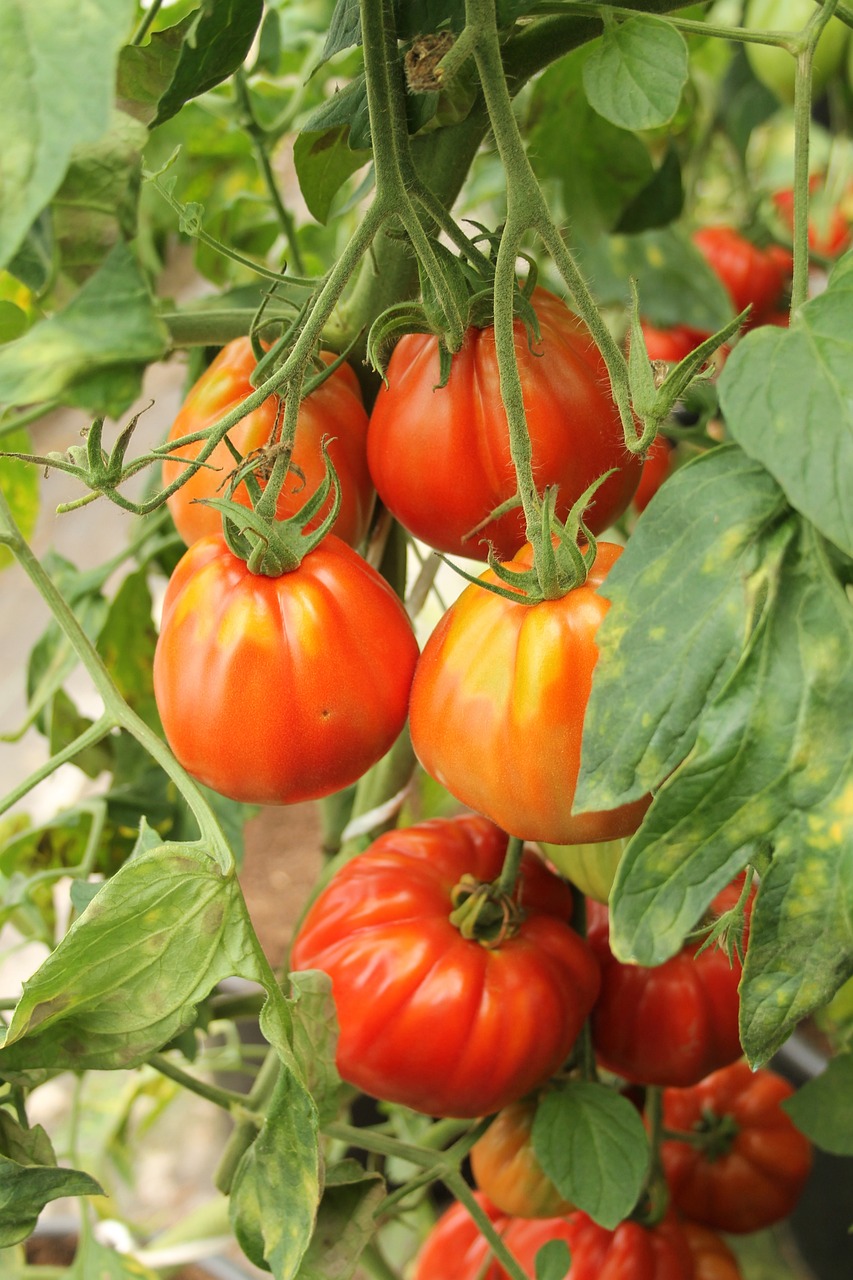Delightful Dianthus, Heirloom Tomatoes, Gardening with Kids and Rubber Trees

I know it might be my imagination, but the days seem to be getting noticeably longer already! It is happening! Spring is getting closer so it’s time to really start planning your next gardening moves. I have all my seed orders in and soon I’ll be starting onions and leeks indoors for a spring planting. Also, this time of year it’s good to have a plan for growing some new perennial flowers. One that we like, and have grown for years, is the Dianthus family of flowers. There are also called pinks, sweet William or carnations depending on the selections. We like the hardy perennial versions and I talk about growing them in this newsletter.
I’ve placed my order for veggie seeds and every year I try a few new ones. Last year I grew ‘Captain Lucky’ and ‘Paul Robeson’. I liked them both, but really liked ‘Captain Lucky’ for its slightly tart flavored, green flesh with red streaks. It was great in a Caprese salad. I talk about some new hybrids and old heirlooms to try in my article in this newsletter.
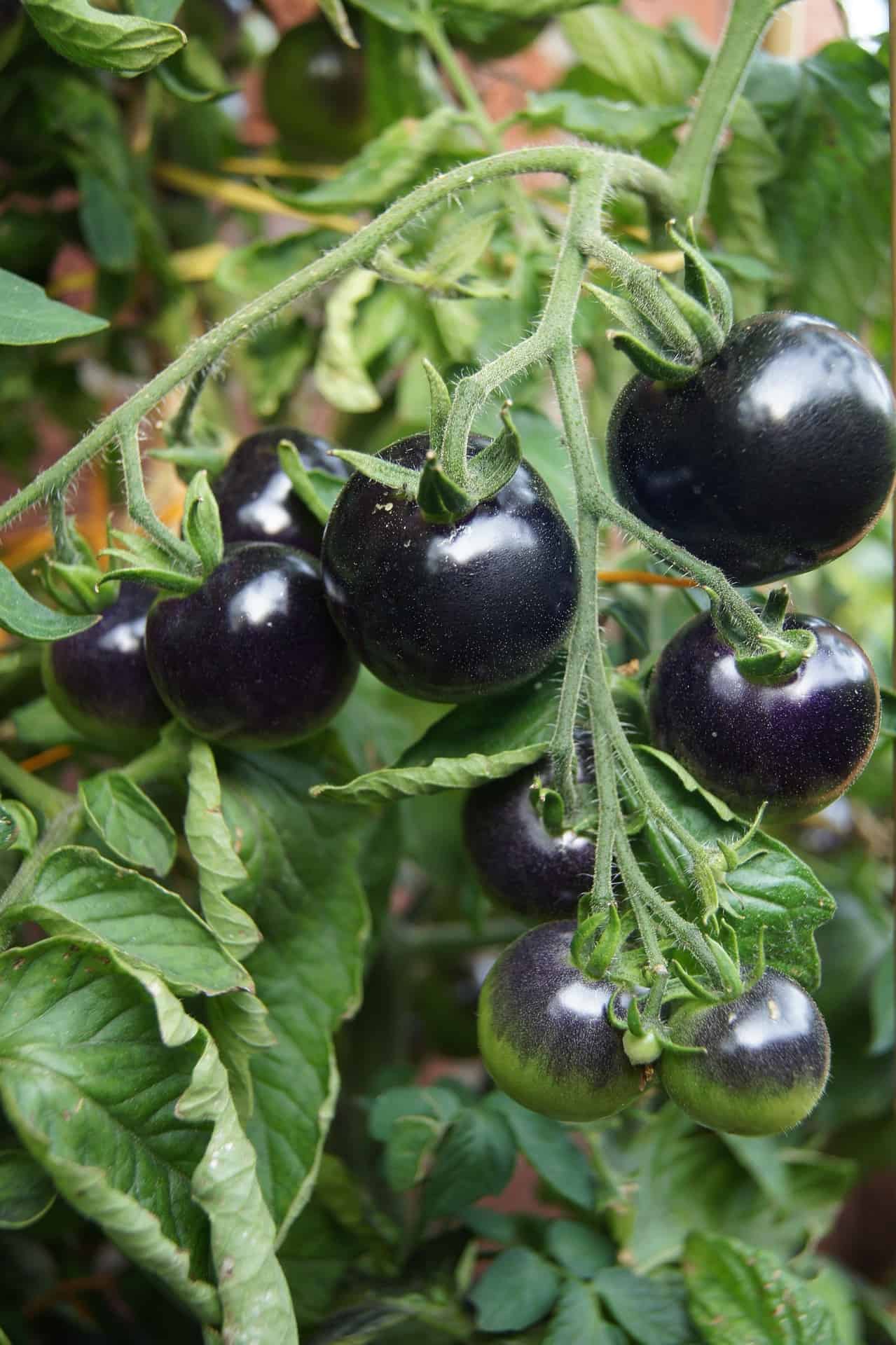
Winter is also a good time to plan some gardening activities with your kids. You certainly can be doing some small projects indoors with houseplants, growing sprouts and growing micro greens now. We all know how busy spring can be, so now is a good time to think about a dedicated garden or activity for your kids and start talking it up. I talk about some good ways to get your kiddos involved in the garden here.
While all this talk of spring gets me excited, there’s still the weather reality of January. So houseplants are still our main focus. In this newsletter I’m continuing to profile different houseplants. Let’s talk about rubber trees. These are great floor plants, if you have the room, and new varieties have more colorful leaves.
Until next time I’ll be seeing you, in the garden.
Charlie

Where to Find Charlie: (podcasts, TV and in-person)
- In the Garden (WCAX-TV CBS) – This week: Flowers for Window Boxes
- All Things Gardening on Vt Public Radio– This week: Perennial Vegetables
- WJOY In The Garden Podcast– This week: The In the Garden Radio Show is on hiatus until March, 2025. Check out the past podcasts here
- Where’s Charlie Speaking? 2/11/25- Stowe Library, Stowe, VT
How to Grow: Dianthus
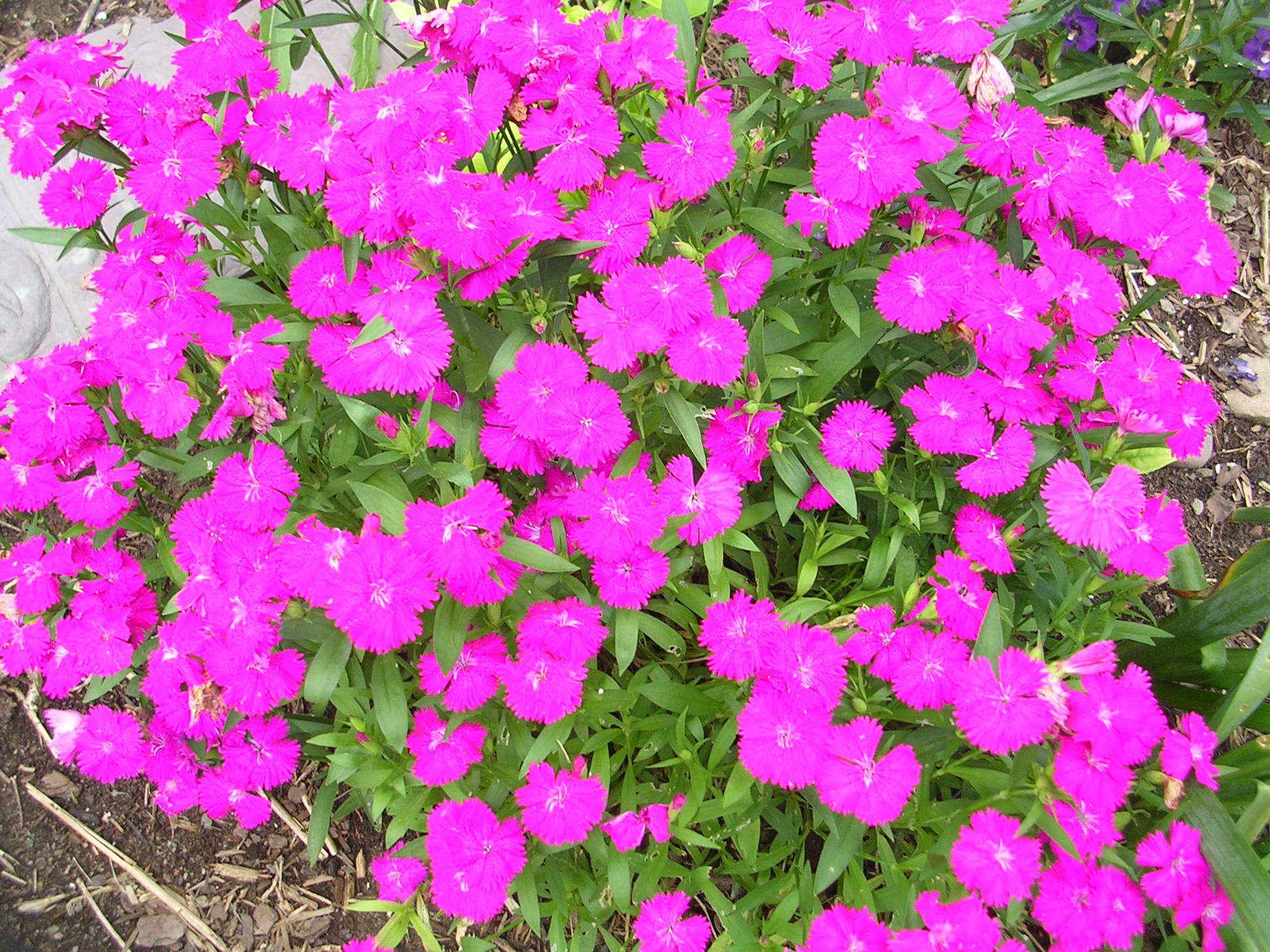
We love easy to care for perennial flowers and especially ones that rebloom in summer. Perennial dianthus fits the bill. There are annual and biennial versions of dianthus or pinks you’ll find in the annual flower racks in garden centers in spring. They are beautiful too, but we’re all about low maintenance. Perennial dianthus come back reliably each year in our zone 5 garden. They love full sun, but can take some shade in warm areas. They grow really well in our raised beds, which tells us they love well drained, fertile soil. Most varieties are less than 1 foot tall, so they make great front of the border or rock garden plants.
While the classic lavender colored flower perennial dianthus is well know, they are other colorful varieties to try. ‘Firewitch’ is an award winning variety with electric pink flowers, grey-green leaves and a dwarf plant that grows only 8 inches tall. ‘Arctic Fire’ dianthus features only a 6-inch tall evergreen plant that forms a colorful mat on the soil. It has white flowers with a red eye. ‘Fire Star’ is also a low grower, but it has fire red colorful blooms. ‘Barbarini’ Purple Picotee’ features unique purple colored dianthus blooms with a sweet fragrance.
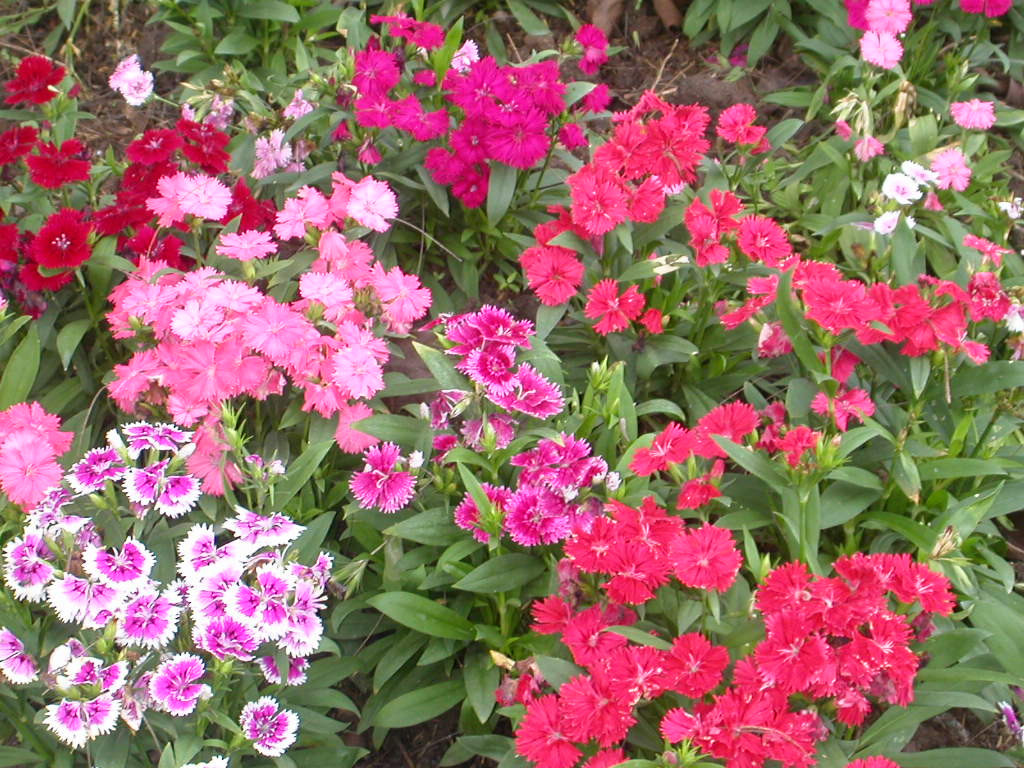
Perennial dianthus can be hardy to zone 4, depending on the selection, and some even grow in warm regions of zone 8. The flowers emerge in late spring to early summer and if you cut back the spent blooms, they will repeat flowers in late summer and fall. Even when they aren’t in bloom, the silvery green foliage is attractive and makes a good compliment to creeping sedums, petunias and portulaca flowers. The flowers also are favorites of pollinators and butterflies.
Some varieties have a subtle fragrance to the flowers and all of them make great cut flowers for an indoor arrangement. Because of their small stature, dianthus also makes a good container plant. You’ll have to protect it in winter by bringing the container into an unheated garage, shed or basement where the temperatures stay around freezing. In spring you can also divide large dianthus plants to spread the beauty around your gardens.
Learn More About Dianthus here
Heirloom Tomatoes
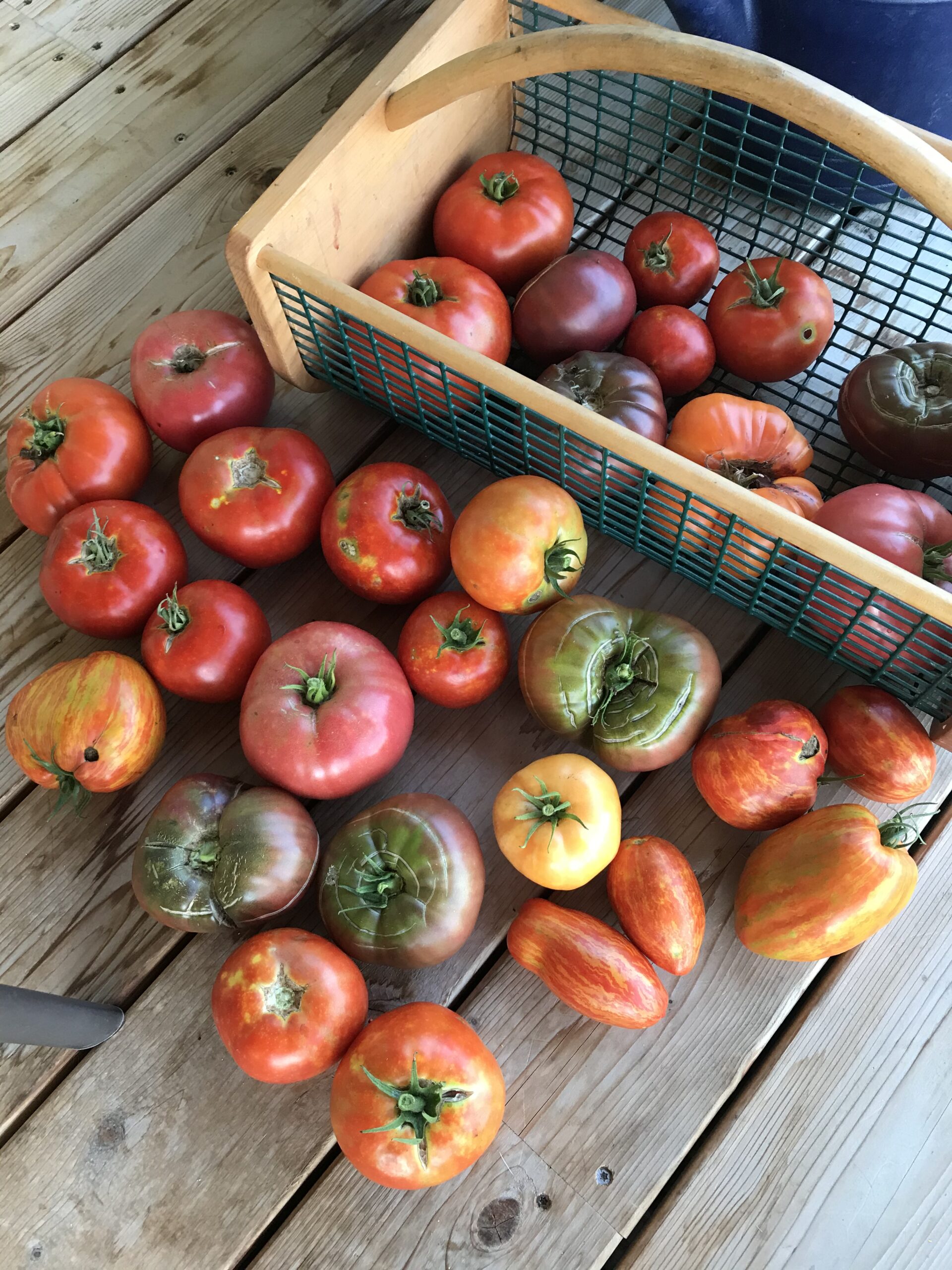
One of the joys of having your own vegetable garden is growing tomatoes. Even though farmer’s markets and farm stands have gotten better about carrying heirloom and unusual varieties of tomatoes, there are still hundreds of unique varieties to try. Each year we try a few new ones just for fun. We have our standard hybrid and heirloom favorites such as ‘ Big Beef’, Celebrity’, and ‘Sun Gold’. But we also try a plant or two of others that seem to be calling us.
Last year we grew ‘Captain Lucky’. I’m not sure where I heard of this variety but the description sounded intriguing. This beefsteak style heirloom hales from North Carolina. It’s a green ripening tomato, but has an amazing streak of red inside when mature. It’s one of those potato-leaf heirlooms, like ‘Brandywine’, so it’s easy to spot in the garden. The plants grew well but had a fair amount of disease. But that was true of many of our tomatoes last summer. It did produce fruits. What I liked about this variety is the flavor. The fruits have a slight tang with a sweetness where the red streaks are located. I found it was a perfect compliment to the basil, mozzarella cheese, olive oil and balsamic vinegar in our Caprese salads.
Another heirloom we tried was ‘Paul Robeson’ . Named after a famous jazz musician, this brown ripening tomato had a deep rich, burgundy colored flesh. Again, it had disease problems, but the fruits were tasty. I like to can tomatoes for winter use, so I’m always looking for good, meaty, sausage shaped fruits. These have the best flavor with few seeds and juice. ‘Blue Beech’ is a nice heirloom I’ve tried and it came to my home state of Vermont from Italy after World War II. ‘Speckled Roman’ is another heirloom, sauce tomato that has lots of thick fleshed fruits with red skin streaked in gold. It’s a beautiful fruit and tasty.

And, of course, there’s always ‘Radiator Charlie’. This heirloom was grown in the 1920s in West Virginia by a man nicknamed ‘Radiator Charlie’ who had a radiator repair shop. He’d give samples of this variety, that he bred, to truck drivers waiting for their trucks to be repaired, and word spread of the classic flavor and texture. He became famous and made enough money to pay off his mortgage on his radiator repair shop by selling the transplants. Sometimes the stories of how these varieties came to be are just as compelling as the varieties themselves.
This year I’m still growing heirlooms, but I’m also trying some unique orange and yellow colored hybrids such as ‘Harvest Moon’ and ‘Marmalade Skies’. With all the new breeding happening in tomatoes, it’s good not to forget about some of the beautiful and productive hybrids coming along.
Learn More about Heirloom Tomatoes here
Gardening with Kids
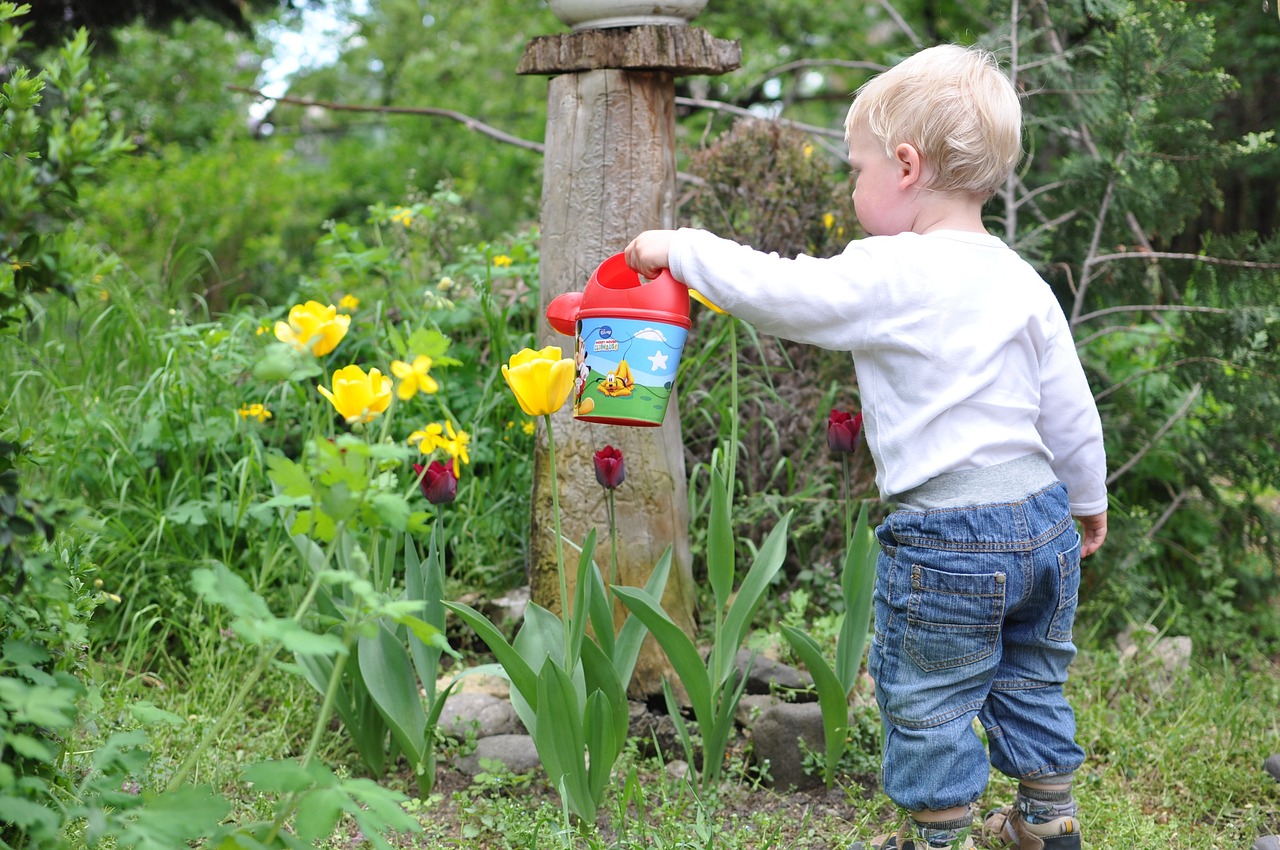
In my office I have a photo of me and my then, 3 year old daughter, in the garden. I has showing her how to plant a seed. I keep it prominently displayed because i know the importance of kids being in the garden. She grew up with gardens all around her and the ability to walk out on a summer day and pick and eat peas, cherry tomatoes and carrots at will. Although she’s not a gardener as an adult, her passion is animals, she still loves fresh vegetables and fruits and is particularly found of coming over to help pick blueberries, raspberries and other small fruits.
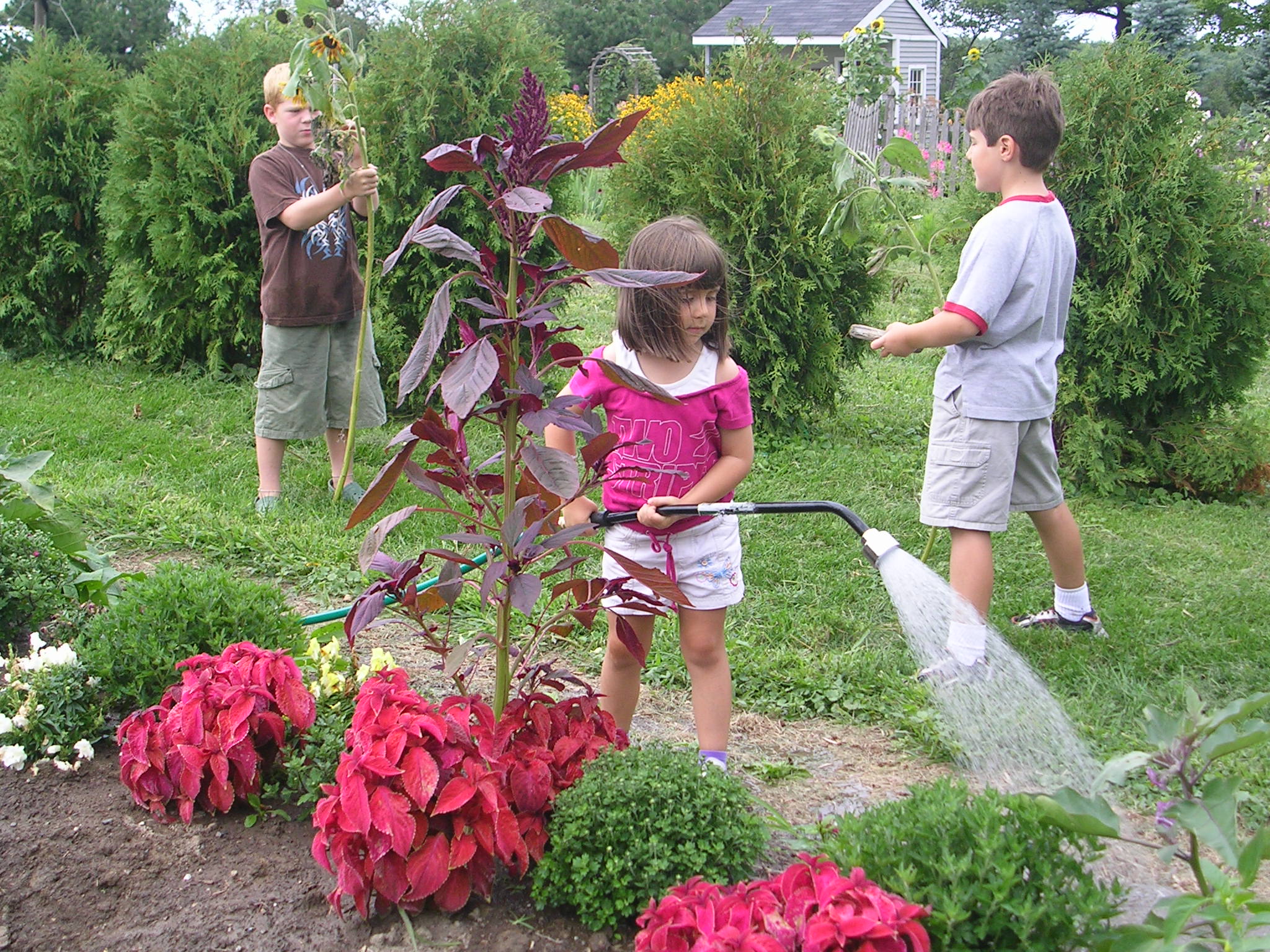
There are numerous studies showing the benefits of gardening with kids. Kids learn an appreciation for Nature, they learn how to work together on a common project, they get along better with other and they gain confidence. It’s great to see more elementary and secondary schools offer gardening programs. Local groups, such as PTOs, non profits, garden clubs and Master Gardeners, help create and maintain these gardens with the kids and sometimes help teach as well. There’s nothing better than learning gardening from a grandma or grandpa figure. For those just starting with community gardening programs there are resources such as kidsgardening.org. This non-profit offers workshops, learning materials, grants and a community of people in the kids gardening world who can help you start and maintain a school, home or kids community garden project.

But you can also do something simply at home. Now is a good time to think about small projects you can do with your child in spring and summer. Remember to gear the project to the ability level of your child. It’s more important to have a positive experience in the garden than to get any great tasks finished. Some young children will be happy just playing in the soil while you plant and work. Other kids can help with planting, making stakes and markers and “decorating” the garden with fun toys and signs. Let their imagination run wild. Still older children can be involved in garden planning, selecting varieties to grow and having their own section of the garden. Garden shopping with your child is a good way to include them in the process.
So, start small, maybe just growing a few plants right now under lights or in a window or growing some houseplants. Sometimes it’s the smallest activities that can perk up a child’s interest in doing more outdoors in your garden.
Go here for more on Gardening with Kids
In Our Garden: Rubber Tree
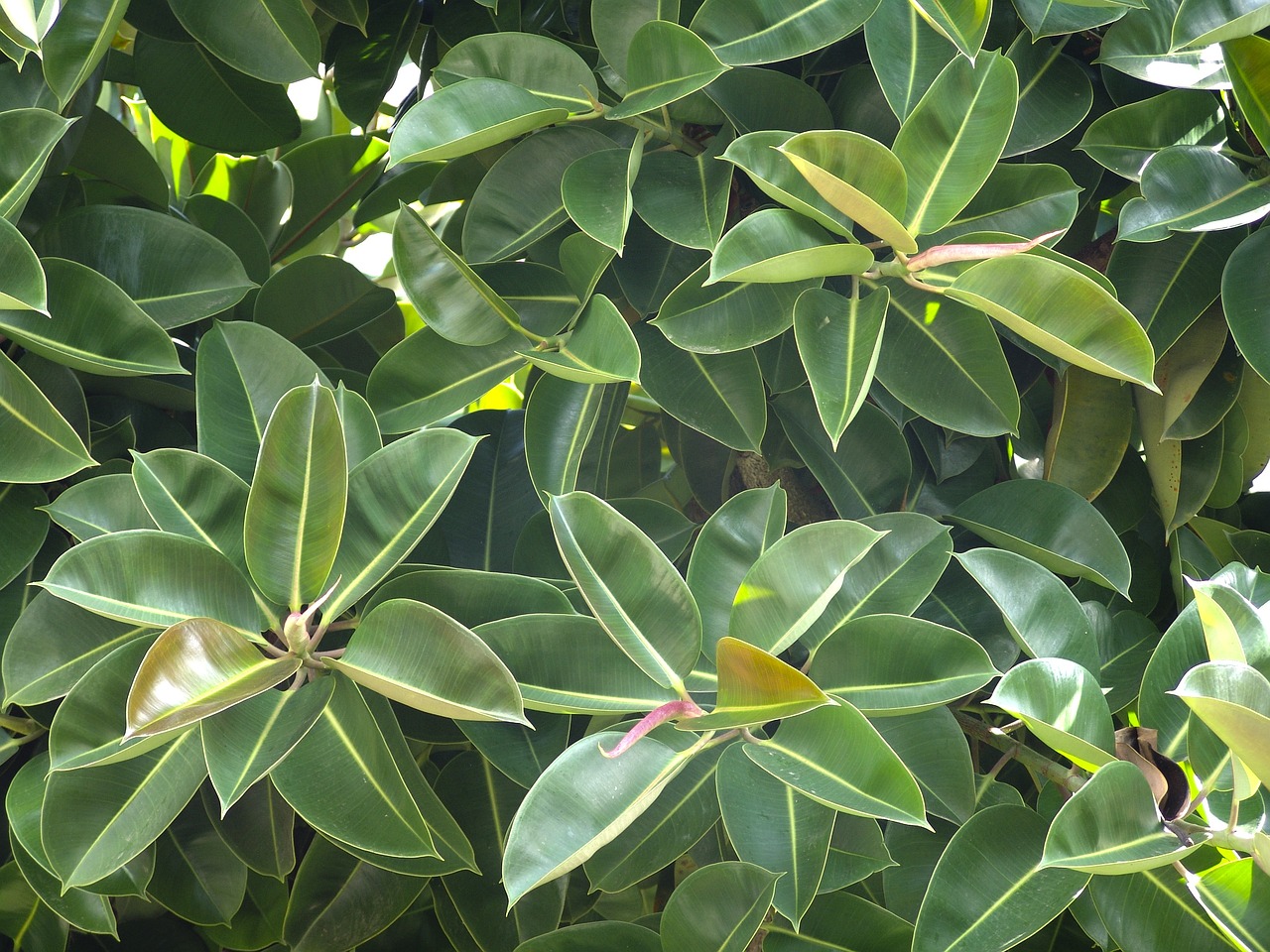
Winter is a time when I particularly appreciate our indoor plants. We have some bigger spaces in our home so it’s nice to have larger, floor houseplants that can each up 5- to 6-feet tall. One common houseplant that’s getting a facelift these days is the rubber tree (Ficus elastica). This tree is large in Nature, but grows to a manageable size indoors in a container. The big, waxy, oval-shaped leaves are usually green colored, but newer varieties expand the color range of this tree.
A classic green leafed type is ‘Robusta’ with its large leaves and grows 8 feet tall. ‘Tricolor’ is a 6 foot tall beauty with pink, white and green colored leaves. ‘Tineke’ is an unusual white and green variegated rubber tree with smaller leaves. ‘Burgundy’ has dark colored leaves and ‘Golden Gem’ has yellow and green colored foliage.
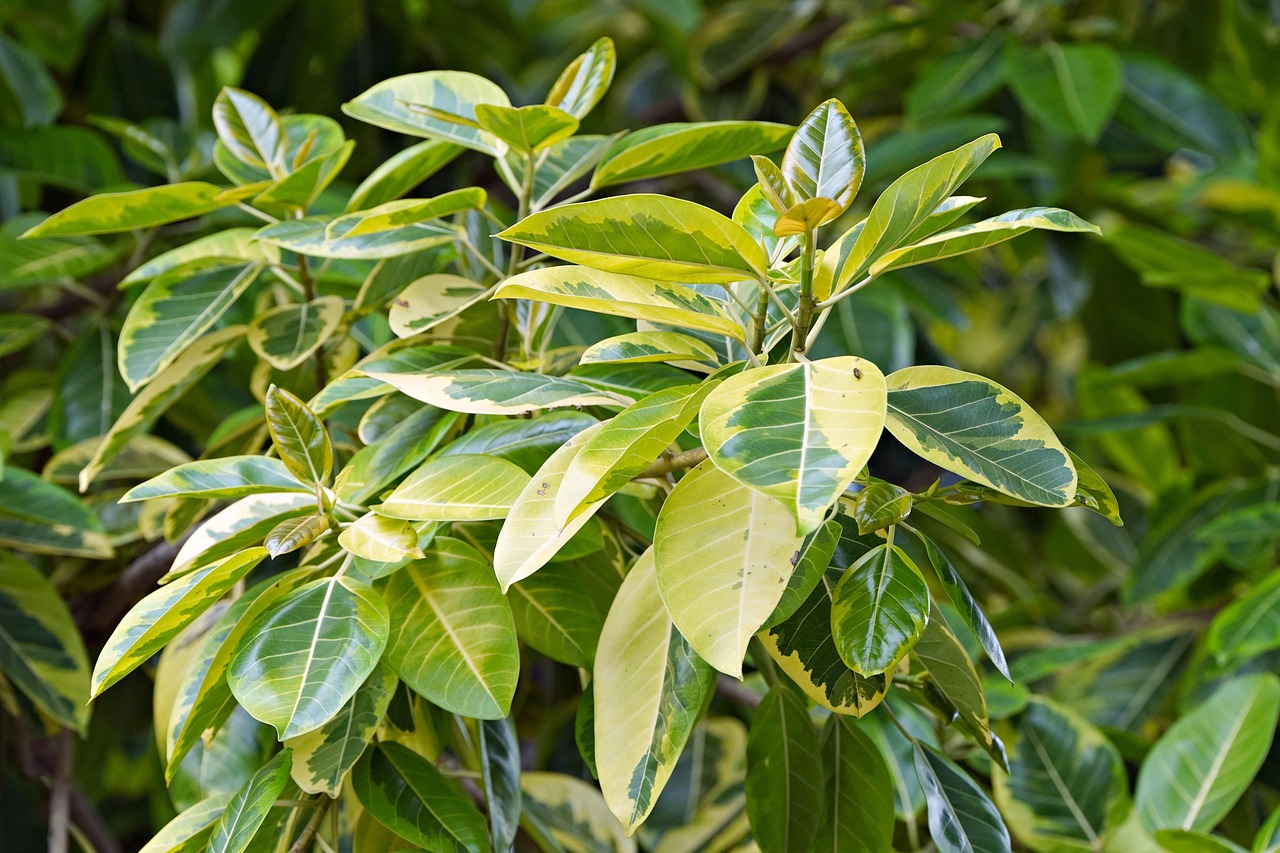
Rubber trees grow best indoors with six to eight hours of bright, indirect sunlight per day, temperatures between 65°F and 85°F and humidity between 40 and 50 percent. In winter it’s best to group houseplants around your rubber tree to help keep the humidity high or use a humidifier in that room. Water your rubber tree in winter only when the soil is dry. During the growing season you can water more often, but don’t keep the soil soggy. Fertilize in spring and prune then as well to reduce the height of your tree. Repot every few years into a pot one size larger with fresh potting soil. You can also root prune the plant and keep it in the same sized pot. Clean the pots well when transplanting.
Propagate rubber trees by air layering. In late winter, go down about 1 foot from the end of a woody branch. Between two sets of leaves take a sharp knife and cut two rings around the stem just below the bark about 1 inch apart. Carefully peel off the bark, brush rooting hormone powder on the wound, moisten some sphagnum peat moss and wrap it around the wound forming a ball. Cover the peat moss with black plastic or aluminum foil and secure the top and bottom. In a month or so, check for roots. Once the ball is loaded with roots, cut off the branch (below the ball) from the mother tree and repot it.
Go here to learn more about growing Rubber Trees
Copyright © 2025 Gardening with Charlie, All rights reserved.


